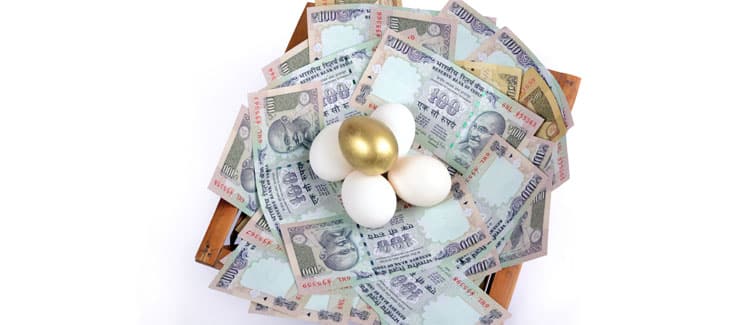Income Tax above 15 Lakh
Earning above ₹15 lakh annually puts you in one of the highest income tax brackets in India. With such income, your tax liability increases significantly under the progressive slab system. However, depending on whether you opt for the old or new tax regime, your final tax outgo can vary. Knowing your options helps you plan investments and claim deductions effectively to reduce your overall tax burden.
New Tax Slabs as per Union Budget 2025
Individuals pay taxes on their annual income based on the tax slab rates proposed in the Finance Bill during the budget session. However, the Union Budget 2025 presented the taxpayers with an option u/ Sec 115 BAC of the IT Act, 1961, to choose between two income tax slab rates with varying approaches.
The new tax regime is applicable by default if you do not opt to switch to the old tax regime. The judicious use of an income tax calculator will help in commencing your tax planning exercises.
Refer to the table below to learn the old vs. new tax structure and the maximum income tax applicable without any tax exemptions and deductions for the respective tax slabs:
| Taxable Income (Rs.) | Tax Rate (%) |
| 0 - 12,00,000 | Nil |
| 12,00,001 - 16,00,000 | 15% |
| 16,00,001 - 20,00,000 | 20% |
| 20,00,001 - 24,00,000 | 25% |
| Above 24,00,000 | 30% |
Old Tax Regime Income Tax Slabs for FY 2025-26 (AY 2026-27)
For Individuals below 60 years of age (Residents & Non-Residents)
| Taxable Income | Tax Rate |
| Up to ₹2,50,000 | Nil |
| ₹2,50,001 to ₹5,00,000 | 5% |
| ₹5,00,001 to ₹10,00,000 | 20% |
| Above ₹10,00,000 | 30% |
(Note: A rebate under Section 87A of up to ₹12,500 is available for resident individuals with total taxable income up to ₹5,00,000.)
For Senior Citizens (60 years to less than 80 years of age) (Residents Only)
| Taxable Income | Tax Rate |
| Up to ₹3,00,000 | Nil |
| ₹3,00,001 to ₹5,00,000 | 5% |
| ₹5,00,001 to ₹10,00,000 | 20% |
| Above ₹10,00,000 | 30% |
For Super Senior Citizens (80 years of age and above) (Residents Only)
| Taxable Income | Tax Rate |
| Up to ₹5,00,000 | Nil |
| ₹5,00,001 to ₹10,00,000 | 20% |
| Above ₹10,00,000 | 30% |
How to Save Tax for Salary above 15 Lakhs in India
Your tax liabilities increase with your income. Fortunately, the Income Tax Act, 1961 provides multiple options to help you save on taxes. Tax-saving instruments not only reduce your tax burden but also help you build a stronger financial future.
For salaried individuals earning over ₹15 lakhs, understanding both the Old and New Tax Regimes is crucial to making an informed decision. The New Tax Regime is now the default option, but you can choose to file under the Old Tax Regime.
Income Tax Exemptions under the Old Tax Regime
This regime allows you to claim numerous exemptions and deductions to lower your taxable income.
-
Save up to ₹1.5 Lakhs under Sections 80C, 80CCC, and 80CCD:
This is the most popular tax-saving section, offering deductions for a variety of investments and expenses up to a combined limit of ₹1.5 lakhs.
- Financial Protection Instruments:
- Term Insurance
- Life Insurance premiums
- Unit Linked Insurance Plans (ULIPs)
- Retirement and Long-Term Objectives:
- Public Provident Fund (PPF)
- Employee Provident Fund (EPF)
- Pension Plan or Annuity Plan from Insurance providers
- National Pension Scheme (NPS) Tier-I Account (within the overall ₹1.5 lakh limit)
- Investments:
- Equity Linked Savings Scheme (ELSS)
- National Savings Certificate (NSC)
- Tax Saving Deposits – 5 Year
- Other Expenses:
- Principal repayment on a home loan
- Sukanya Samriddhi Scheme (SSS)
- Children's tuition fees (for up to two children)
- Financial Protection Instruments:
-
Additional ₹50,000 deduction through Section 80CCD(1B):
You can claim an additional deduction of up to ₹50,000 for your personal contribution to the National Pension Scheme (NPS) Tier-I account. This is over and above the ₹1.5 lakh limit of Section 80C.
-
Reduce Tax Liability up to ₹75,000 under Section 80D
You can save tax by paying for health insurance premiums for yourself, your family, and your parents.
- Health Insurance for Yourself, Spouse, and Dependent Children:
- Deduction up to ₹25,000 (if a non-senior citizen).
- Health Insurance for Parents:
- Deduction up to ₹50,000 (if a senior citizen).
- Deduction up to ₹25,000 (if a non-senior citizen).
- Preventive Health Check-up:
- A deduction of up to ₹5,000 is included within the overall limits for a health check-up.
- Health Insurance for Yourself, Spouse, and Dependent Children:
-
Reduce Tax Liability up to ₹2 Lakhs under Section 24
You can claim a deduction of up to ₹2 lakhs on the interest paid on a housing loan for a self-occupied property. The principal repayment of this loan can also be claimed under Section 80C.
-
Standard Deduction
Salaried individuals can claim a standard deduction of ₹50,000 from their salary income, regardless of any investment.
Income Tax Exemptions under the New Tax Regime
The New Tax Regime offers lower tax rates but allows for very few deductions and exemptions. This regime has now been made the default option.
- Standard Deduction: Salaried individuals are now eligible for a standard deduction of ₹75,000.
- Tax Rebate: A tax rebate under Section 87A is available for resident individuals with a taxable income up to ₹12 lakhs. This rebate is up to ₹60,000, effectively making their tax liability zero.
- Deductions for NPS Contributions:
- Section 80CCD(2): Your employer's contribution to your NPS account is deductible. The limit is up to 10% of your salary (Basic + DA) for private-sector employees and 14% for government employees.
- Section 80CCD(1B): You can also claim an additional deduction of up to ₹50,000 for your self-contribution to NPS, over and above any other deductions.
Note: Most of the common deductions available in the old regime, such as those under Section 80C, 80D, and interest on home loans (Section 24), are not available in the new regime.
Income Tax for ₹15 Lakhs Salary in India
To calculate the income tax on a ₹15 lakh salary, you must first decide which regime to opt for.
- New Tax Regime: The calculation is straightforward with very few deductions, primarily the standard deduction and NPS contributions (if any). The lower tax slab rates are applied to your income.
- Old Tax Regime: You must first reduce your gross salary by claiming all eligible deductions (80C, 80D, HRA, home loan interest, etc.) before calculating the tax based on the older tax slabs.
Calculating Tax for Rs. 15 Lakhs Salary in India under Old vs. New Income Tax Regime
The following grid summarizes the overall permissible amount of Rs. 15 Lakhs annual income:
| Feature/Section | Old Tax Regime | New Tax Regime (Default) |
| Basic Exemption Limit | - Up to Rs. 2.5 Lakhs (for individuals below 60 years) - Up to Rs. 3 Lakhs (for senior citizens 60-80 years) - Up to Rs. 5 Lakhs (for super senior citizens above 80 years) |
Up to Rs. 4,00,000 for all individuals. |
| Standard Deduction | Rs. 50,000 for salaried individuals and pensioners. | Rs. 75,000 for salaried individuals and pensioners. |
| Section 87A Tax Rebate | Full tax rebate of up to Rs. 12,500 for taxable income up to Rs. 5 Lakhs. | Full tax rebate of up to Rs. 60,000 for taxable income up to Rs. 12 Lakhs. This effectively makes income up to Rs. 12 Lakhs tax-free for resident individuals. |
| Section 80C, 80CCC, 80CCD (1) (Max Rs. 1.5 Lakhs combined) |
Allowed. Covers investments like: - PPF, EPF (employee contribution) - NSC, Tax Saving FDs - Life Insurance Premiums, ULIPs, Child Plans - Principal repayment of Home Loan - Sukanya Samriddhi Scheme (SSS) - Children's tuition fees |
Not Allowed. Most 80C deductions are not available. |
| Section 80CCD (1B) (NPS - Self-Contribution) | Allowed. Additional deduction of Rs. 50,000 for self-contribution to NPS Tier-I, over and above the 80C limit. | Allowed. Additional deduction of Rs. 50,000 for self-contribution to NPS Tier-I, over and above other limits. |
| Section 80CCD (2) (NPS - Employer Contribution) | Allowed. Deductible up to 10% of (Basic Salary + DA) for private sector employees, and up to 14% for Central Govt. employees. This is over and above the 80C limit. | Allowed. Deductible up to 14% of (Basic Salary + DA) for both government and non-government employees. This is one of the few significant deductions. |
| Section 80D (Health Insurance) | Allowed. - Up to Rs. 25,000 for self, spouse, dependent children. - Additional up to Rs. 50,000 for senior citizen parents (or Rs. 25,000 for non-senior citizen parents). - Up to Rs. 5,000 for preventive health check-up (within overall limits). |
Not Allowed. Health insurance premium deductions are unavailable. |
| Section 24(b) (Home Loan Interest) | Allowed. Deduction of up to Rs. 2 Lakhs on interest paid for a self-occupied housing loan. | Not Allowed. Interest on a housing loan for self-occupied property is not deductible. |
| House Rent Allowance (HRA) | Allowed as per rules (least of actual HRA, 50%/40% of salary, or rent paid - 10% of salary). | Not Allowed. |
| Leave Travel Concession (LTC/LTA) | Allowed as per rules. | Not Allowed. |
| Professional Tax | Allowed (deductible from salary). | Not Allowed. |
| Other Deductions (e.g., 80E, 80G, 80TTA/TTB) | Generally Allowed as per specific section rules (e.g., 80E for education loan interest, 80G for donations, 80TTA/TTB for interest on savings accounts). | Mostly Not Allowed. Only specific exemptions/deductions like Agniveer Corpus Fund contributions are permitted. |
Important Note: A 4% Health and Education Cess is applicable on the calculated income tax liability in both regimes. Surcharge may also apply for higher income brackets as per the prevailing rules. It is always recommended to perform a detailed calculation under both regimes to ascertain which one is more beneficial for your specific financial situation.
Points to Note:
- New Tax Regime is Default: It's the standard, but you can still choose the old one.
- New Regime Benefits: Higher basic exemption (Rs. 4L), and no tax up to Rs. 12L (due to Rs. 60K rebate).
- Standard Deduction: Rs. 75,000 in New Regime, Rs. 50,000 in Old Regime.
- Old Regime Deductions Lost: Most 80C, 80D, HRA, and home loan interest (Sec 24b) deductions are not in the New Regime.
- NPS Exception: Employer's NPS (80CCD(2)) and extra Rs. 50,000 NPS (80CCD(1B)) are allowed in the New Regime.
- Old Regime Value: Still better if you have many deductions to claim.
- Always Compare: Calculate tax under both regimes to find your best option.
- FY 2025-26 Rules: All info is for the current financial year (FY 2025-26).
Conclusion
If your income exceeds ₹15 lakh, proactive tax planning becomes essential. Whether you choose the old regime with multiple exemptions or the new regime with lower rates, understanding the impact of each regime can help you minimize your tax liability. Evaluate your eligible deductions, exemptions, and lifestyle goals before deciding. An informed approach ensures both tax efficiency and long-term financial growth.
˜The insurers/plans mentioned are arranged in order of highest to lowest first year premium (sum of individual single premium and individual non-single premium) offered by Policybazaar’s insurer partners offering life insurance investment plans on our platform, as per ‘first year premium of life insurers as at 31.03.2025 report’ published by IRDAI. Policybazaar does not endorse, rate or recommend any particular insurer or insurance product offered by any insurer. For complete list of insurers in India refer to the IRDAI website www.irdai.gov.in
*All savings are provided by the insurer as per the IRDAI approved insurance plan.
^The tax benefits under Section 80C allow a deduction of up to ₹1.5 lakhs from the taxable income per year and 10(10D) tax benefits are for investments made up to ₹2.5 Lakhs/ year for policies bought after 1 Feb 2021. Tax benefits and savings are subject to changes in tax laws.
¶Long-term capital gains (LTCG) tax (12.5%) is exempted on annual premiums up to 2.5 lacs.
++Source - Google Review Rating available on:- http://bit.ly/3J20bXZ


- SIP Calculator
- Income Tax Calculator
- Compound Interest Calculator
- NPS Calculator
- Show More Calculator
Income Tax articles
Explore the popular searches and stay informed
- LIC
- Investment Plan
- Annuity Plan
- Child Plan
- Pension Plan
- ULIP Plan
- Child Investment Plan
- SIP
- LIC Calculator
- SIP Calculator
- SBI SIP
- ULIP Calculator
- Sukanya Samriddhi Yojana
- Best SIP Plans
- Retirement Planning
- SBI SIP Calculator
- HDFC SIP Calculator
- Sukanya Samriddhi Yojana Interest Rate
- NPS Interest Rate
- Deferred Annuity Plans
- SBI Annuity Deposit Scheme Calculator
- Immediate Annuity Plans
- Post Office Child Plan
- Prime Minister Schemes For Boy Child
- Government Schemes for Girl Child
- 50k Pension Per Month
- Atal Pension Yojana Calculator
- Best Pension Plan in India
- CIBIL Score
- 1 Crore Term Insurance
- Best Term Insurance Plan
- Term Insurance for Women
- Term Insurance for NRI
- Term Insurance
- Term Insurance Calculator
- Life Insurance
- Term Insurance with Return of Premium
- Whole Life Insurance
- Term Insurance vs Life Insurance
- What is Term Insurance
- Life Insurance Calculator
- 5 Crore Term Insurance
- 2 Crore Term Insurance
- 50 Lakh Term Insurance
- Term Insurance for Housewife
- Benefits of Term Insurance
- Term Insurance Terminology
- Medical Tests for Term Insurance
- Term Insurance for Self Employed
- Claim Settlement Ratio
- 10 Crore Term Insurance
- Term Insurance for Smokers
- 1.5 Crore Term Insurance
- Zero Cost Term Insurance
- FIRE Calculator

















